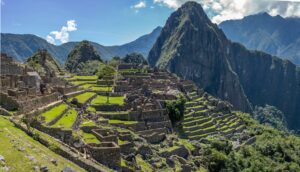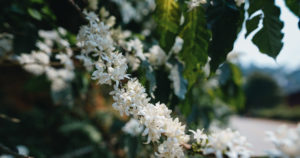Brazil is the world’s largest coffee producer, and its coffee has gained global recognition for its distinctive characteristics that make it unique in the global market. Below are some of the key features of Brazilian coffee, as well as its history and impact on the coffee industry.
History of Coffee in Brazil
Coffee arrived in Brazil in the 18th century during the colonial era. Initially, coffee cultivation began in the northern state of Pará, but soon spread to other regions, such as Minas Gerais, São Paulo, Espírito Santo, and Bahia. By the 19th century, Brazil was already one of the world’s leading coffee producers, and over time, it became the undisputed leader in terms of production and exportation.
Types of Brazilian Coffee
Brazil primarily produces two types of coffee: Arabica and Robusta, with Arabica being the most widely grown and the one most recognized internationally.
- Arabica Coffee: Arabica is the most common and highest-quality coffee grown in Brazil, accounting for approximately 70-80% of the total production. This coffee is known for its smooth flavor, lower acidity, and greater aromatic complexity. The most well-known Arabica varieties in Brazil include Bourbon, Typica, Catuai, and Mundo Novo.
- Robusta Coffee: Although the production of Robusta is smaller than that of Arabica, Brazil also grows this type of coffee, especially in the northern region of the country, such as the state of Roraima. Robusta coffee has a stronger, more bitter flavor and higher caffeine content than Arabica. It is commonly used in espresso blends.
Sensory Characteristics of Brazilian Coffee
Brazilian coffee is known for its distinctive flavor and aroma profiles, which vary depending on the region and processing method. Some of the most common characteristics include:
- Smooth and balanced flavor: Brazilian coffee is known for its medium to full body, giving it a smooth mouthfeel. Its acidity is moderate, making it accessible to both seasoned coffee drinkers and newcomers to specialty coffee.
- Sweet, nutty notes: Many Brazilian coffees feature flavor profiles reminiscent of nuts, chocolate, caramel, and hazelnuts. This is due to the growing conditions and the sun-drying process commonly used in Brazil.
- Fruity aromas: Although Brazilian coffee is less acidic than coffees from other countries, certain varieties offer fruity notes such as apple, plum, or orange.
- Full body and mouthfeel: Brazilian coffee has a rich texture and a full body, making it ideal for espresso and filtered coffee preparations. Its ability to maintain a consistent flavor profile makes it a popular choice in the global market.
Coffee-Producing Regions in Brazil
The main coffee-producing regions in Brazil are distributed across the states of Minas Gerais, São Paulo, Espírito Santo, Bahia, and Paraná. Each region has unique climatic and geographical conditions that influence the characteristics of the coffee produced.
- Minas Gerais: This is the most famous coffee-growing region in Brazil, known for producing high-quality Arabica coffee. Areas like Cerrado de Minas and Sul de Minas produce coffees that are highly regarded for their balance and complexity.
- São Paulo: While coffee production in São Paulo has decreased in recent years, the state still produces excellent coffees with sweet flavor profiles and hints of cocoa.
- Espírito Santo: Known for producing both Arabica and Robusta coffees, this region is recognized for its high-quality Robusta beans, which are often used in espresso blends.
- Bahia: Coffee from Bahia is known for having higher acidity compared to other regions, giving it a fresh, vibrant flavor profile.
- Paraná: While less well-known than other regions, Paraná has a growing coffee industry, producing smooth, balanced coffees with subtle flavor notes.
Processing Methods
Brazil uses several coffee processing methods, each of which affects the final characteristics of the beans. The most common methods are:
- Sun-dried: This is the traditional method in Brazil, where coffee cherries are spread out on flat surfaces to dry naturally under the sun. This process tends to add a natural sweetness to the coffee and is ideal for beans with chocolate and nutty flavors.
- Washed or Wet: While sun-drying is more common, some producers in Brazil use the washed method, which highlights fruity notes and a greater clarity in the cup.
- Natural: In this process, coffee cherries are dried whole before being hulled. This results in a coffee with more body and an enhanced sweetness.
Global Impact
Brazilian coffee is essential to the global coffee trade, not only because of its volume of production but also due to its quality and diversity. Coffee exportation represents a significant part of the Brazilian economy, and Brazil continues to be the global leader in coffee exports. Furthermore, Brazilian coffee has been a key component in the creation of the espresso culture, being used in blends in coffee shops worldwide.
Conclusion
Brazilian coffee is a multifaceted product with a rich history and a quality that ranges from smooth and sweet to complex and fruity. Whether you prefer a milder coffee for everyday consumption or a stronger, bolder blend for espresso, Brazil remains a key reference in the coffee industry. The country’s diverse coffee-growing regions and processing methods ensure that every cup of Brazilian coffee offers a unique experience.






